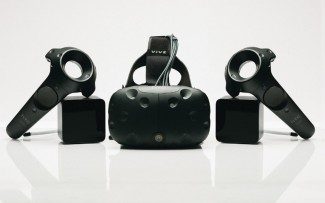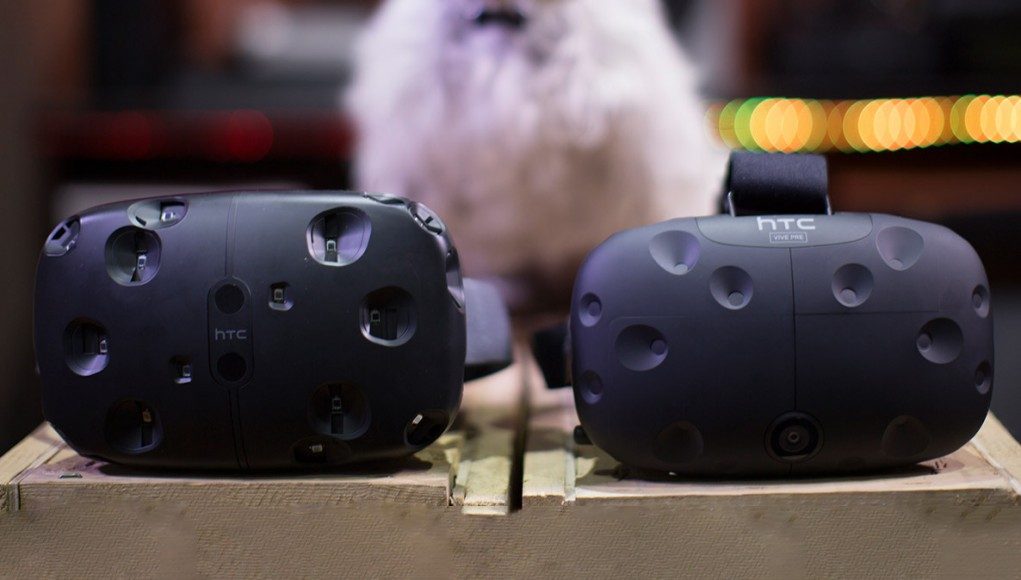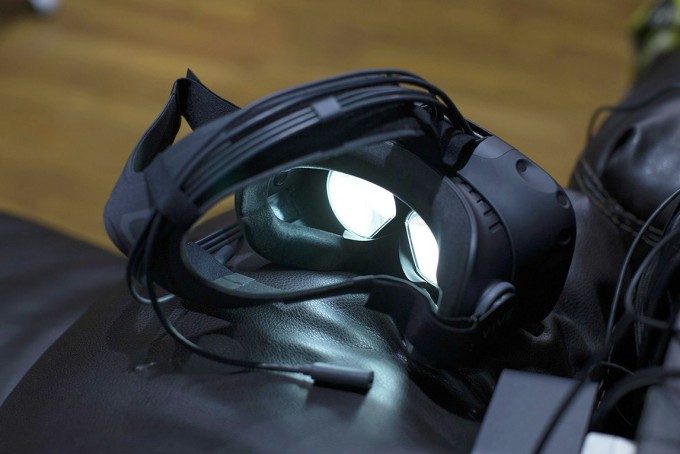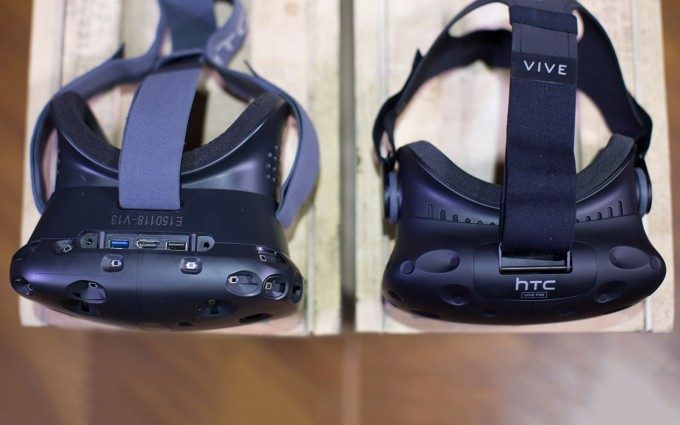While the original HTC Vive development kit has impressed many with its ‘room-scale’ VR capability, the unit was a full step behind its competitors in the ergonomics department. The Vive Pre, the second development kit of the VR headset, looks to have taken a significant stab at bringing ergonomics up to par.
Compared to the likes of the Oculus Rift CV1 and PlayStation VR, the HTC Vive development kit is quite bulky and heavy. We’ve been looking forward to seeing the design of the device evolve as it gets closer to a consumer-ready state.
Revealed today in detail at CES 2016, the second ‘Vive Pre’ dev kit brings the overall size of the headset down quite significantly.
Comparison photos shot by Reddit user ‘GalacticInquisitor’, a member of developer StressLevelZero, show the first and second Vive dev kits side by side.
While the front of the device is cleaner and definitely smaller, it’s the depth of the Vive Pre that sees the biggest improvements. With the Vive Pre sitting closer to the face, perceived weight will be reduced even if actual weight isn’t (so far we don’t have hard weight measurements to compare the two).

Also helpful in improving ergonomics is an improved strap system which forgoes the rear ‘T’ connection in favor of a triangular shape which hugs the back of the head, similar to the Oculus Rift CV1.
While these improvements are welcome, the consumer version of the Vive, now set to launch in April, will further evolve before hitting consumers.









